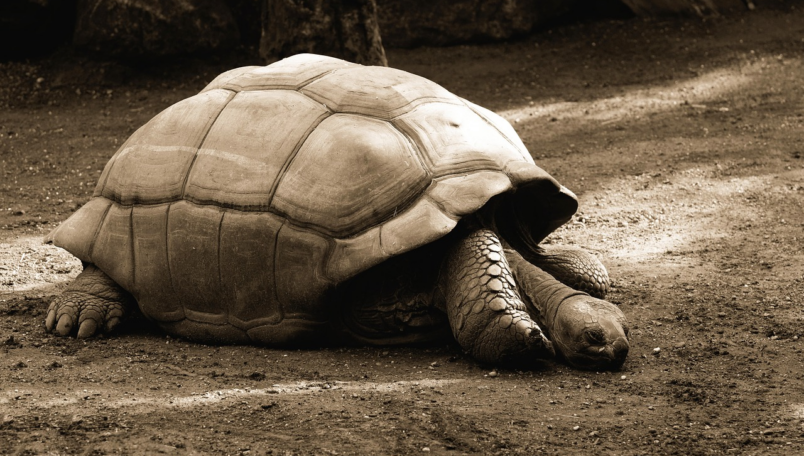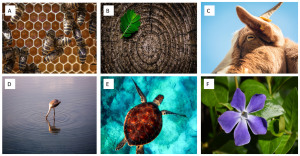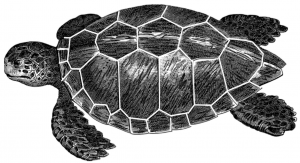Geometry (2D & 3D shapes): Shells and Shapes
Challenge level ⭐⭐
(designed for children with prior knowledge of the Year 3 and Year 4 programme of study)
Learning Objective
We are learning how to solve a natural world problem by using and applying our skills and knowledge of geometry and 2-D shapes.
Useful prior knowledge:
- To know if a polygon is regular or irregular
- To compare and classify geometric shapes according to their properties

Clip Description
The natural world is full of interesting 2-D shapes. Honeycomb cells (A) are hexagonal shaped, as are some of the bony scutes on the shell of a turtle (E). Concentric circles (circles that share the same centre but are different in size) can be found in the rings of trees as they grow and age (B) or in the ripples of a pond or lake (D) when it is disturbed. A periwinkle flower has an almost perfect pentagon at its centre (F) and the pupils of a goat and some other animals are almost rectangular (C).

In this fascinating clip, we see lots of interesting interconnected 2-D shapes within the shells of tortoises and turtles. Which shapes other than hexagons do you think we’ll see? Watch the clip to find out.
Quick Whiteboard Challenge
Viewed from above, a turtle’s shell appears to have lots of different polygons that fit together. (In reality, the sides of these shapes will be curved not straight).

How many different types of polygons can you see?

 Sign in
Sign in